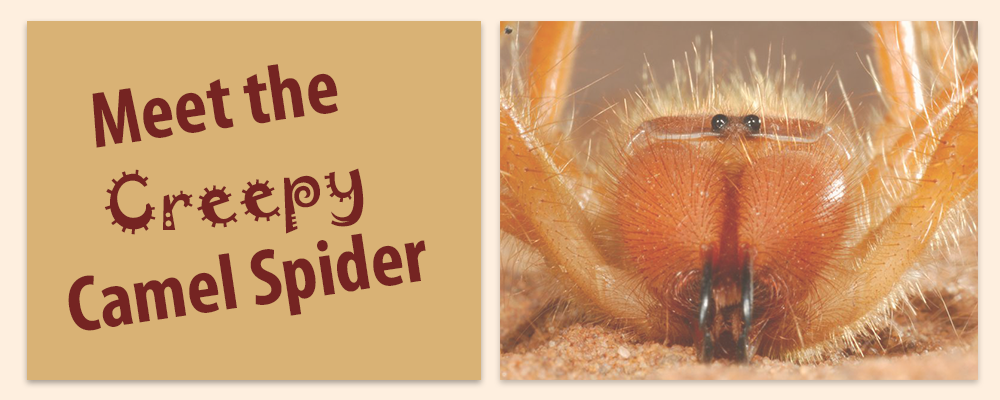Have you met the camel spider? Also known as sun spiders and wind scorpions, these unusual creatures are arachnids but have features that favor insects. Creep factor still intact. They have a separate order of their own: Solifugae, which is separate from true spiders and contains over 1000 species. Some experts say they are closer to pseudoscorpions, while others claim their attributes are closer to mites. No matter where you try to group them, they’re creepy. Here is an in-depth look into the lifestyles of these unusual creatures.
Where do you find Camel Spiders?
Camel spiders are native to deserts all over the world. They were originally found in Middle Eastern Deserts, but also reside in the southwest U.S. and Mexico.
Camel spiders do not have silk glands and do not spin webs. They are primarily nocturnal and seek shelter out of the sun if mobile during the daylight hours. They burrow into soil, hide under logs or rocks or even under manure piles.
What does it eat?
Due to its massive jaws (up to 1/3 of total body length), camel spiders can eat bugs, and lizards Even small snakes can be prey, however, they do not often eat prey larger than themselves. There are records of it eating a wide variety of prey including termites, wasps, beetles, scorpions and spiders. They’re known for digging into anything they can get their jaws on.
Creeped-out Facts
10 Legs? Camel spiders appear to have ten legs, but they don’t. They have 8 legs and 2 sensory organs known as pedipalps. Still, it’s creepy looking at the least!
Run, Camel, Run. Camel spiders have been observed to run in a zig-zag pattern at speeds up to 10 miles per hour. The species runs and runs until it runs into food. They have been observed to run for literally two or more hours without stopping
Bad Biter But… This creepy critter has a mouth structure that is straight out of a horror movie. It’s like scorpion’s claws side by side in its mouth with rows of blades and teeth. Despite the creepy factor of the camel spider, they do not have venom and cannot harm humans. They can give you a painful bite, but it’s not deadly.
Creepy Conclusion
The camel spider is weird and creepy. If you look closely, they’re the stuff of nightmares. Good news. In North Carolina, you’re not likely to ever meet a camel spider face to face.
This fall, you will see more spiders around your neighborhood and house. It’s not because of Halloween or because of cooling weather… although that makes for great campfire stories. It’s just their mating season.


Recent Comments